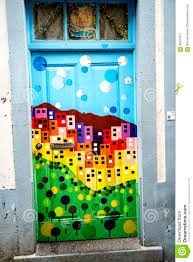
DOORWAYS
As you know, we are in lockdown, shut behind doors for our own safety and the safety of everyone else. Covid-19 has closed schools, closed shops and temporarily closed some of the things we take for granted, like playing in the park with our friends.
★Activity 1:
Make a list of all the things that you miss doing. You may like to think about some of the following categories:
- seeing family
- seeing friends
- day to day things
- playing sports
- exploring your interests
- places you love to visit
★ Activity 2: I opened the magical door and saw …
This is an idea inspired by Kit Wright’s poem ‘The Magic Box’ In the poem, Kit imagines what may be contained inside a magical box. We can use this idea to connect to what could be behind the magical door.
- Before you begin, brainstorm a list of ideas for what might be behind the door. Let your imagination run wild as there is no wrong answer. Once you have your list, have a go at writing a poem, using the repeating opener: I opened the magical door and saw …

Here’s an example to help you get going:
I opened the magical door and saw shadows dancing.
I opened the magical door and saw a rainbow leading to another world.
I opened the magical door and saw people crying.
I opened the magical door and saw a magical fairground flooded in lights.

2. Once you have got your ideas, go back and see if you can add to them. You could add more description or bring the thing to life through action,
e.g. I opened the magical door and saw a shoal of hungry shadows, tangoing through busy streets.
Have fun adding to your ideas and let your imagination run wild. Have a read of this poem I created with some Y6 children to help you get ideas:
The Magical Door

3. Write your own poem
Can you explore more of the senses? You may like to try the following pattern:
- I opened the magical door and saw …
- I opened the magical door and heard …
- I opened the magical door and smelt …
- I opened the magical door and touched …
- I opened the magical door and found …





























